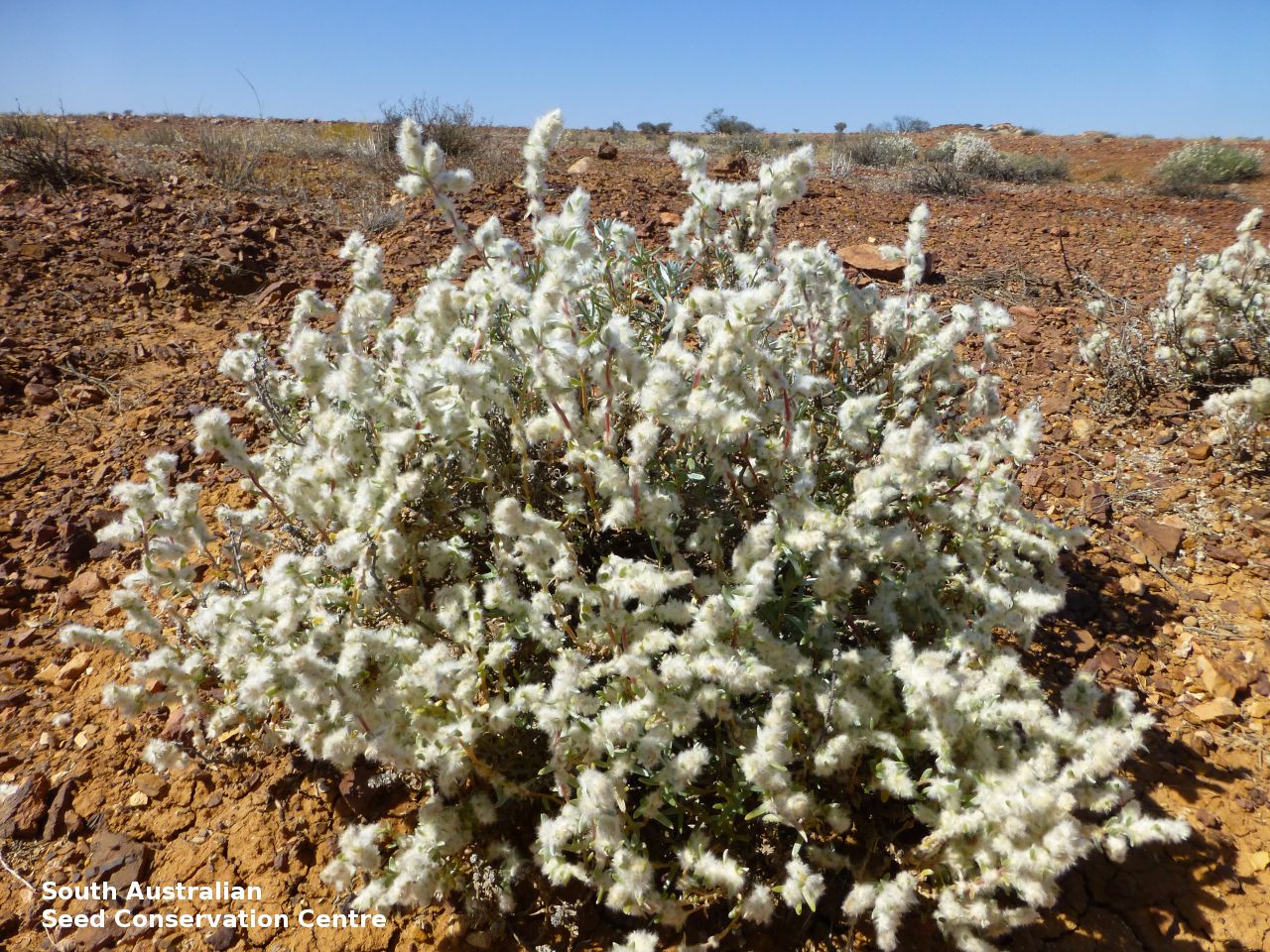Woolly Bluebush
Display all 16 images
















Regional Species Conservation Assessments per IBRA subregion.


Least concern
Near threatened
Rare
Vulnerable
Endangered
Critically endangered
Extinct
Data deficient
Adelaide
Arkaroola
Ceduna
Coober Pedy
Hawker
Innamincka
Marla
Marree
Mount Gambier
Oodnadatta
Renmark
Wudinna
Keith
Yunta
Display IBRA region text
| Olary Spur (FLB03) | Flinders Lofty Block | Data Deficient [edge of range, isolated pops] |
| Northern Flinders (FLB05) | | Least Concern |
| Gawler Lakes (GAW03) | Gawler | Rare (IUCN: RA d(ii)) (Probable Decline) [gibber tablelands] |
| Arcoona Plateau (GAW04) | | Least Concern |
| Kingoonya (GAW05) | | Rare (IUCN: RA d(ii)) (Probable Decline) |
| Roxby (GAW07) | | Least Concern |
| Commonwealth Hill (GAW08) | | Rare (IUCN: RA d(ii)) [edge of range] |
| Bimbowrie (BHC05) | Broken Hill Complex | Data Deficient [edge of range, isolated pops] |
| Curnamona (BHC06) | | Data Deficient [edge of range, isolated pops] |
| Warriner (SSD04) | Simpson Strzelecki Dunefields | Near Threatened |
| Breakaways (STP01) | Stony Plains | Least Concern |
| Oodnadatta (STP02) | | Least Concern |
| Murnpeowie (STP03) | | Least Concern |
| Peake-Dennison Inlier (STP04) | | Least Concern |
| Witjira (STP06) | | Least Concern |
| Baltana (STP07) | | Least Concern |
| Sturt Stony Desert (CHC02) | Channel Country | Least Concern |
| Everard Block (CER03) | Central Ranges | Rare (IUCN: RA d(ii)) |
| 2 of 6 subregions | Flinders Lofty Block | Least Concern , Data Deficient |
| 5 of 8 subregions | Gawler | Least Concern , Rare |
| 2 of 4 subregions | Broken Hill Complex | Data Deficient |
| Warriner (SSD04) | Simpson Strzelecki Dunefields | Near Threatened |
| 6 of 7 subregions | Stony Plains | Least Concern |
| Sturt Stony Desert (CHC02) | Channel Country | Least Concern |
| Everard Block (CER03) | Central Ranges | Rare (IUCN: RA d(ii)) |
Botanical art
Kath Alcock paintings: 2
Prior names
Kochia eriantha
Kochia concava
Common names
Woolly Bluebush
Etymology
'Maireana', after the 19th century French botanist, Adolphe Lemaire and 'eriantha', from Greek 'erio', meaning woolly and 'anthos', meaning flower.
Distribution and status
Found in open shrubland on stony or clay soils in the Arid Lands region. Mainly recorded from South Australia. Native, common in South Australia, uncommon in Northern Territory, Queensland, New South Wales and Western Australia.
Herbarium regions: Lake Eyre, Gairdner-Torrens, Flinders Ranges
AVH map: SA distribution map (external link)
Plant description
Shrub to 0.5 m high, with twisted branches. Leaves narrow, fleshy and densely silky. Flowers arranged in leafy spikes, from July to September. Fruits are perianth covered with long woolly/silky hairs. Seeds are ellipsoid to circular, convex, brown seed. Seed embryo type is peripheral
Seed collection and propagation
Collect seeds between July and September. Collect dry, papery fruits. Check that they contain well developed seeds before making a collection. Shake or strip fruits into a vessel. Remove twigs and other plant material.
| Location | No. of seeds
(weight grams) | Number
of plants | Date
collected | Collection number
Collection location | Date
stored | % Viability | Storage
temperature | | BGA | 3,200 (33.56 g) | 50+ | 25-Sep-2008 | DJD1210
Lake Eyre | 20-Jul-2009 | 80% | -18°C |
Location: BGA — the seeds are stored at the Adelaide Botanic Gardens, MSB — the seeds are stored at the Millennium Seed Bank, Kew, England.
Number of plants: This is the number of plants from which the seeds were collected.
Collection location: The Herbarium of South Australia's region name.
% Viability: Percentage of filled healthy seeds determined by a cut test or x-ray.

















